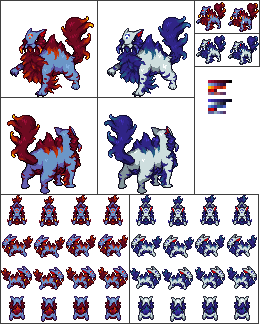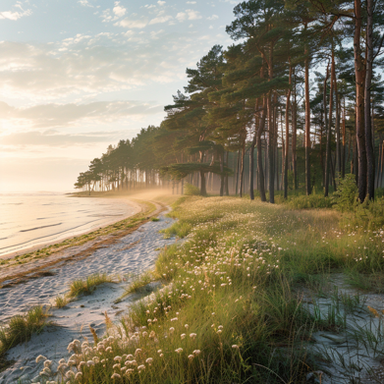HOME | DD
 Kalia24 — Dragon tutorial - part 2 - limbs
Kalia24 — Dragon tutorial - part 2 - limbs

Published: 2013-10-03 12:50:16 +0000 UTC; Views: 2132; Favourites: 40; Downloads: 15
Redirect to original
Description
Finally finished second part of the tutorial.Yeah, the "details" issue was supposed to be here, but again as I was writing I found there's a lot to tell about the dragon limbs, so the "details" got moved to the next (and last, I hope) tutorial sheet.
The subtitle says all - here u can read a bit about your dragon limbs: both front/rear paws and wings.
Part 1 - overall sketch
Part 3 - final touch
Related content
Comments: 19

*one finger to hold them all
don't forget about Pterosauria kind

as about the membrane attachment - birds' wings are NOT attached to the whole torso on the whole wing width, there are long gaps
(That's why I'm kind of against the theory that only dragons with wing membrane attached to the entire torso (not just rib cage) can be 'correct' enough to reproduce if a character is designed to have them less attached... And I don't like when people are playing experts and doing this to mine when drawing them, changing their designs...)
In general one of the more useful dragon tutorials
👍: 0 ⏩: 1

As far as recall, Pterosauria had more kind of beak (sometimes with air-filled crest) than t-rex/dog/any-other-heavy kind of head. Their "actual" head was quite small, like today birds. You know, like toucans - their heads aren't that big when u take the beak away.
As for birds and their wings - yeah, the "meat" part is small, but the feathers fill the required space. So if a feather gets bent away/lost, there may even be a hole in the middle of the wing, but it doesn't mean it's supposed to be that way. Notice that the pictures of the birds u chose are taken in one particular moment - braking/landing. In that position the wing-arm gets twisted to cause braking force, and since feathers are not glued to the body and each other, they twist as well. If u take a picture of the same bird flying (aka. the moment when it needs full rising force), the wigs are aligned to the torso and feathers form a solid "membrane" minnesotawaters.org/eaglelakel… thumbs.dreamstime.com/x/flying… Sorry, it's not any of my fantasies, it's just physics/anatomy.
So if u're doing a feathered dragon, the "gap" in time of braking/manouvers is ok, since that's how feathers work - in flight though it should be "closed". But if u're working on membrane wings, better focus on examples like bats or Pterosauria u mentioned. They have not only membrane along whole torso, but also hind legs in fact, but that would ruin most of the designs, since it doesn't look quite magnificent that flying with hind legs spread...
That is if u're aiming at realistic dragons, not cartoon ones like Dragoness from "Shrek" or alike. If u're not about realism, then... well, u can do anything in fact, but ppl may complain (it's hard to tell mistake from something done premeditatedly, especially when u see that something is off in work of someone who has visibly great skills).
👍: 0 ⏩: 1

Still, I was mostly reffering to their wings^^
I'm just pointing out there is a gap existing in there, not that it's gaping all the time^^
The dragon characters I had in mind should look fairly realistic(would be great, because they're often in the same image with other forms, which are of realistic shape, not cartoony; but that's usually the heads that ruin the feel to me) but not necessairly in terms of how they work, as they're shapeshifters. If a character can do as unrealistic thing as shapeshifting, which also involves a change of size and some of markings, I believe they should have the full right to fly without having to follow physics
I'm wondering: considering the dragon's front's mass is well balanced to its hind half's mass, the wings having short membrane attachment maybe could keep the body well, that's where I'm aslo thinking about birds having a gap but managing to keep their bodies in the horizontal line anyway... and some are large, have long necks, legs and very little tails(that won't add much carrying surface)...
In my dragons, I was thinking about very light bones which are not just empty(birds) but also contain a properly balanced amout of hel or another gas lighter than the air, this way, flying on Earth they would feel more like flying on the Moon if the gas is at a correct density(I heard that too high can make such gas heavier but idk if the person was right; if that's true then when not flying, the density could be made higer to make the dragon a bit heavier on the ground - the gas could be pressed on then). The head would be the heaviest because of brain, teeth(I can't imagine them being empty or gas-filled), horns etc. while the tail would contian air sacks (the spine is more like of a snake but a dragon doesn't need so much of tail muscles in it as it doesn't need the power to strangle prey, while the dragon tail is much thicker compared to a snake's body(which is the part that does the strangling while also contains inner organs, not just muscles, that a dragon tail would be so fat for... a strangler e.g. ball python, eats once a month in captivity, sometimes they have a break lasting 9 months or even 11 as I recently witnessed, meaning they don't need much fat gain either-that snake survived on one hamster..., the dragon tail is still like thicker than enough, so there could be room for air sacks I think, and if the air sacks also contained a hel-like light gas, the back half of the body would be much lighter than front. So adding legs alongside the tail could balance the weight)). Chest, which accumulates all the main mass: organs, muscles, is fully supported by wing arms and attached membrane.
Ofc, my dragons could possibly use magic for flying. But I'm wondering if the above could work alone, assuming the organism would have developed some accomodation to use the gas.
But yup, if I make a dragon having 'wrong' wing carrying power, it's my decision, b it grounded or just a whim. Other thing is I have much problems with perspective and positioning the wings so they look nice. But I mess the wings no matter how much membrane they have.
Why I'm stupbornly into having no attachment beyond the ribs, is that that dragon type should be able to embrace. They're sentient and spiritual creatures, whose main purpose of life is love. If they coudn't embrace at the hip and waist levels, without disturbing attached membranes, they'd have some issues
👍: 0 ⏩: 1

Yes, the gap is there - but in feathered wings. And birds are keeping their body horizontal only when it's closed. When it opens, their hind parts are going down. There's no such thing like open gap and horizontally aligned body. So if a membrane-winged creature has a way to close it (like some additional stiffening in the membrane that can be manipulated), then it's ok. But I feel it's shooting a mosquito with a cannon. Membrane is very elastic. Even when u look at your hand and spread the fingers, u'll see that even this little part of skin between them is mowing "up and down" when it's being stretched/loosened. In a big membrane this movement would be even more noticeable, so even if a creature got the membrane attached down to it's hips or even below, it wouldn't prevent it from hugging/being hugged. Let's use some kind of anthro form for example: Wingattach
And when wings are folded, they cause almost no air-resistance at all - so if u design correct body-wings connection, u can have dragons with full membrane, able to embrace and walk on hind legs
All it takes is some work on anatomy.
As for eastern dragons and so on: there is "magic" and "magic". Eastern dragons are like we see them because of their mystical origins: in China they were creatures of water and sky. Celestial beings, not any real animals. Only recently they became mingled with "our" western dragons and produced many strange creatures. But if we're talking about pure eastern dragons, then they are no matter to discuss in terms of physic or biology (their enormously long bodies, whiskers floating in the air etc.).
Also when coming to shape-shifting (including size change): u can make creature that changes from one realistic form to another, limiting magic to the change process or make something cartoony/grotesque. First way requires more work. Second will probably make ppl complain - if they see two correctly-built forms of the creature and find the third somehow off, they will point to that third and poke u on and on to correct things. Never been in such situation myself, since I'm trying to make my creatures possibly realistic, but I guess it may be pretty annoying (even if u write in artist's comment that it's supposed to be that way, they won't stop, because ppl in many cases don't read the comment - with that I collided more than once).
To achieve "higher density" for gases like helium to be heavier than air, u'd probably have to squeeze it almost to liquid form. And to achieve it u'd have to use such pressure or so low temperature that it wouldn't be for any living creature to survive. So helium-filled dragon is not really a realistic creature. In fact sounds more like winged airship/balloon.
In Naomi Novik's series "Temeraire" dragons are said to have air-sacks, like birds, but filled with gas that is lighter than air. These air-sacks though are situated quite naturally - in the centre of dragon mass, on flanks - to make the whole creature lighter. Still it doesn't make dragons float and the creatures have to use their wing-force to rise their up-to-50-ton bodies into air.
And it's not chest that contains the heaviest organs, it's abdomen (stomach, liver, intestines). Chest contains mostly heart and lungs (that are not heavy, only take a lot of space). So if u support only chest (ribs), the mass centre is hanging loose. To balance such thing, u'd have to make the dragon enormously huge head and front/ move wings "down" the body, but that would mean having membrane on hips again/ make it's rear an enormous gas-filled balloon, which takes us back to Dragoness form "Shrek".
So if u want a realistic dragon, reducing membrane is not a thing u want to do (especially since it's not necessary, like I wrote in the beginning). U just have to decide - realistic or magical.
If u have issues with some parts and would like some help, let me know - it may be that it's like one or two small things that are needed to improve some aspect and when u look at your own work, there's no friggin way u can think of them. That's why I often use my husband as proof-viewer: he sees things in my works that slip my eyes.
👍: 0 ⏩: 1

Never had people complaining. Just noticed some artists messing up the designs up to their own prefferences, ignoring the character's design at various parts.
Supported chest can contain stomach and liver(still membrane could support those), the unsupported 'belly' intestines(e.g a bearded dragon's intestines are very short, so short that they can get blocked by undigested things) and genitals, and possible some air sacks. Have seen chest listed as the heaviest on some other realistic intended tutorial
That Shrek dragoness has a very large butt xD And tiny wings.
I'd like to go kind of inbetween. The dragon looking fairly realistic(just the feeling, not much 'correctness') but functioning like magical. It's mostly difficult with the colour: vivid red, and with slightly anthropomorhic.
Aren't dragons wrong by the mere basic definition? For being vertebraes with more than 2 sets of limbs for a start? Nothing on Earth has other number than 2 pairs of limbs while being a vertebrae, and dragons are definitely treated as if they were supposed to be vertebraes for having a spine and stuff. And we can't really assume if a dragon of non-Earth like anatomy and not matching the laws of Earth physics (gravity, mass, carrying power for flight etc.) wouldn't be just right for some other world/planet?
Also, if an eastern can fly without wings... xD
I'm sometimes wondering if aren't we making sci-fi out of fantasy... 
Also, this image (first of us and most precious exept for its faults) would be totally impossible: Our Heaven of Draffection (though I need to update the wings: smaller and gettign that kind membrane 'spike' at the level of elbows, a dewclaw toe..; this drawing was a character design at the same time, wings membrane attachment resulted from the pose; it'll need a lot of proportion fixes too, characters' designs didn't change much though, today their ref looks like this: Anna as Dragoness - reference Tom as Dragon - reference ). I'd like to polish this one int the future but without changing the pose. And loose membrane for this is a no-no, it's kind of a parachute here.
Muszę, bo cytat jest po polsku, a jednocześnie mogę bo widzę kraj na profilu:
"Bimbam sobie na Naukę Białego Człowieka. Smoki nie istniały? Nie mogły latać, bo były za ciężkie? Nauka nie będzie mi wyznaczać zasad logiki, skoro nie potrafi wyjaśnić sama sobie, dlaczego trzmiel lata mimo zbyt wielkiej masy ciała w stosunku do wielkości skrzydeł. Nauka chętnie zaprzeczyłaby istnieniu trzmiela – jednak zbyt wielu świadków potwierdza jego obecność na Ziemi."
A trzmiel lata i się śmieje.
i co z tym fantem? 
Może taki smok miałby podobny ubaw z teorii, że jego skrzydła nie mogłyby go utrzymać? Nie możemy być pewni, bo nie istnieje.
👍: 0 ⏩: 2

And what I forgot before (somehow recalled now, working on other dragon) - colouring problem.
Try putting the desired colour as base (vivid red) and highlight/shade with other shade of it (f.ex. more pink/orange for highlights, a bit of purple for shadows) - that would break the monochromatic feeling and make the whole thing more natural.
Also - in nature thing like flat colours is quite non-existant. Even "pure black" animals have green/blue highlights and the "blackness" is never the same - once it's more graphite-grey, other time extremely dark brown. So try to make the base colour uneven - adding spots of shade just slightly different from the base makes amazing things when it comes to realistic look and is not disturbing the desired colour (see Plein-Vite and Berghexe - if u look closely, both of them have in fact two base colours, second in form of spots or back coating; without it they looked much worse).
👍: 0 ⏩: 0

Going that way - all fantasy creatures are "wrong", because they are... well, fantasy.
And recently read about some series about more sci-fi dragons (as a breed achieved on other planet from local fauna, where all/most creatures have 6 limbs by default) - the Pern series, it's available in Poland too, but even less popular than Temeraire I think. Shame we have dragon books under our noses and never hear of them or learn about them only by accident...
The first mentioned picture is nice - it looks more conceptual/heraldic than realistic though (both because of poses and proportions). If u wanted realistic one, then yeah - some things would have to be changed. If the wings are only a parachute here (they are not rising, only gliding), the wings may be positioned lower and horizontally, which takes the tension away from the part nearest to the body and would allow to put the arm around waist like I gave example in the sketch before.
A propos trzmiela - już doszli, jak skubaniec lata (teściu się jakiś czas temu strasznie cieszył, bo on lubi takie nowinki)
👍: 0 ⏩: 0

I love how you go through brief biology on dragons every now and then. XD I love dragon biology.
👍: 0 ⏩: 1

I think it helps a lot to make quite-realistic dragons - details do great for the look of the work.
👍: 0 ⏩: 0

I feel the hanging argument is.... Well what about birds that hover? Will their bodies still be horizontal?
👍: 0 ⏩: 1

Yes. Yes, they will. See this photo for instance:
www.markhancoxbirdphotography.…
See the proportions of the wing-body length? The wing is almost as long as the whole body. That makes the wings hold the body in the right (horizontal) position since it's connected to the wings' raising force. If the connection was not there, the force would "leak" through the gap between the wing and the body and the latter would have nothing to hold it horizontal.
For the heavy bugs (like cockchafer) u can see, that their body is below their wings' level when they're flying (plus they're unable to perform very long flights).
Now try to imagine a dragon - whose body is not half-filled with air, but is a solid mass of strong muscles - being much longer than a bug, but trying to fly on such weak-connected wings. No way it could work.
Everything is about transferring the raising force from wings to the main body (and main mass).
I hope I answered your question(s).
👍: 0 ⏩: 1

Oh yes. The image you linked very clearly shows that most of the wing structure holds the bird together in a horizontal position, the tail fanning and folding while hovering.
It's not just a single attachment point with the body hanging off of it. xD
Thank you so much. Exactly what I was asking
👍: 0 ⏩: 0

Och nie ma sprawy ^^ twoje tutoriale są bardzo pomocne
👍: 0 ⏩: 1



























